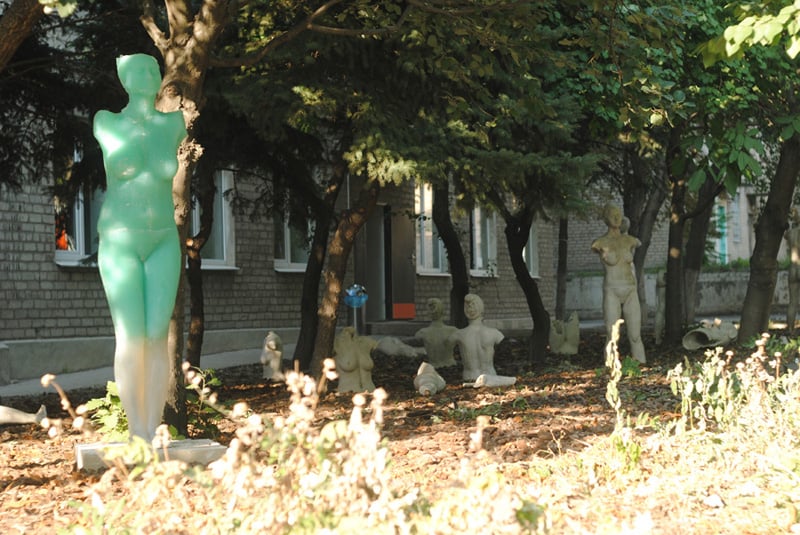
Ukrainian artist Maria Kulikovska is taking the destruction of her work into her own hands, after “Homo Bulla,” a series of soap sculptures created from casts of her nude body was allegedly destroyed by pro-Russian forces in Eastern Ukraine who are attempting to maintain the Donetsk People’s Republic (DPR), a territory established by a group of pro-Russian rebels.
Last June, the Russian-backed separatist group seized control of the Izolyatsia Center for Cultural Initiatives in Donetsk. “Homo Bulla,” which had been installed outside the center in 2012, was reportedly among several works used for target practice by the occupying forces. (Fittingly, the same Swedish soap Kulikovska uses for her work is also used for testing by weapons factories.)
“They completely destroy my full body-sculptures by shooting them. When they shot them, they announced that their action was their own performance,” Kulikovska told artnet News via e-mail, “to show everyone their power and what will happen with anyone who do not agree with them.”
Maria Kulikovska destroying a work from her “Homo Bulla” series. Photo: Piers Allardyce, courtesy of the Saatchi Gallery, London.
The occupants have issued statements denouncing Izolyatsia’s “perverted” art, but Kulikovska think their actions prove “they’re really scared of art, different opinions and the power of new fresh and open ideas.”
In response to the act of destruction, Kulikovska recreated three works from the series as part of a group exhibition of emerging Ukrainian and UK artists at London’s Saatchi Gallery. Naked, she then smashed the works with a hammer during the show’s opening.
“It’s my response to the terrorists that I am the owner of my body and my life. It is also a feminist stance; no one has the right to destroy images of women,” she told the Art Newspaper.
Maria Kulikovska, “Homo Bulla” installed at the Izolyatsia art center.
Photo: Maria Kulikovska.
Following the Russian occupation, Izolyatsia has relocated its operations to Kiev. Kulikovska was among the Ukrainian activists who protested at Russia’s Venice Biennale pavilion, as part of Izolyatsia’s tongue-in-cheek vacation sweepstakes.
As part of the center’s ongoing efforts to keep the creative voice alive in Ukraine, Izolyatsia is currently mounting a mayoral campaign for artist Sergey Zakharov in nearby Mariupol. The election, which has been postponed twice due to corruption, is currently scheduled for November 29. After the current mayor imposed a ban on campaigning, Zakharov responded by taking photos of himself and his supporters with their mouths covered in tape.
“Like Maria, I had my home and freedom taken from me in Donetsk, and I feel a responsibility to work toward using art and social activism to ignite hope and change in similar places like Mariupol,” the artist told artnet News in an e-mail.
Artist and mayoral candidate Sergey Zakharov has called on artists to challenge the ban on campaigning for mayor of Mariupol. Max Borodin, campaigning for mayor for the People Power Party, with friend. Photo: Izolyatsia.
In June, pro-Russian militants allegedly destroyed a giant lipstick sculpture by artist Pascale Marthine Tayou. Major site-specific works by Daniel Buren, Leandro Ehrlich, and Cai Guo-Qiang have also reportedly been looted and vandalized, while Kader Attia’s Ce N’est Rien has allegedly been converted into a prison and interrogation center.
“Everything has been destroyed,” said Kulikovska of Donetsk’s ravaged cultural scene.
“UK/raine: Emerging Artists from the UK and Ukraine” is on view at the Saatchi Gallery, Duke of York’s HQ, King’s Road, London, November 24, 2015–January 3, 2016.